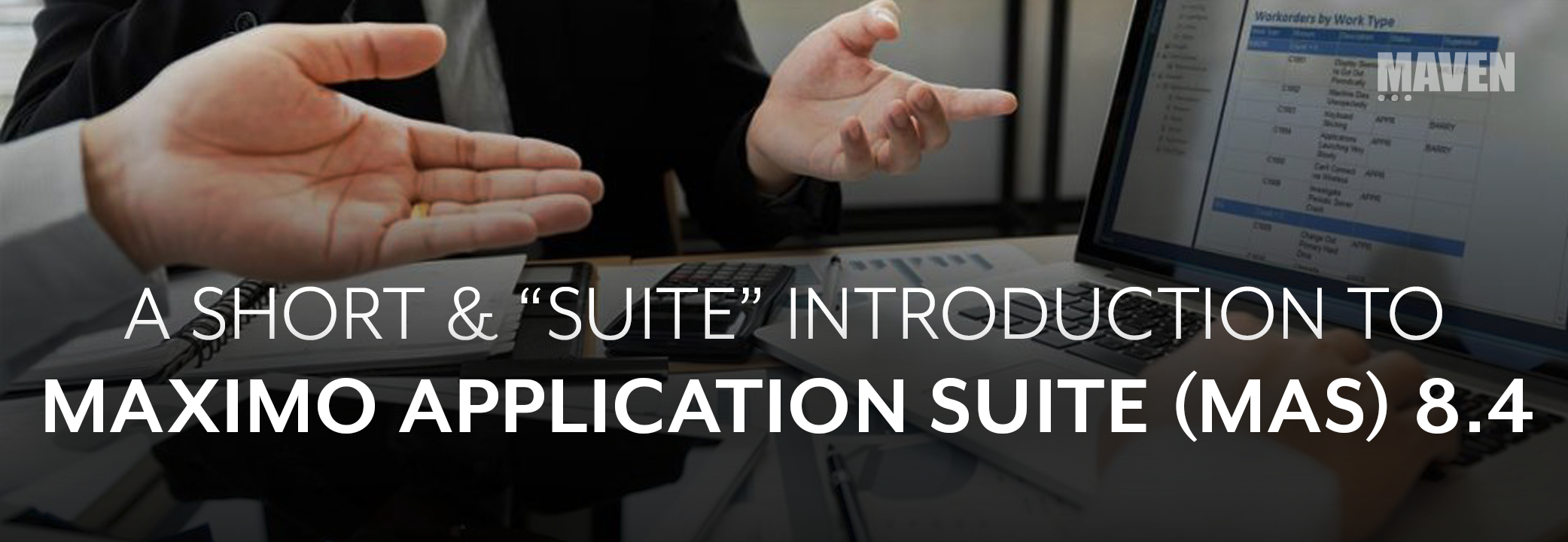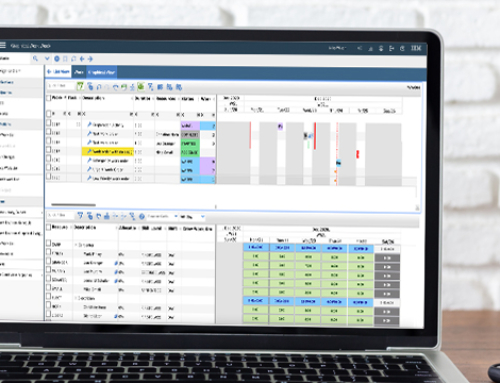At long last, Maximo Application Suite (MAS) 8.4 is here. Released on May 18, 2021, it is the first MAS version to include Manage, the component that we have all come to know and love as Maximo. We’ve been hearing about the new Maximo Application Suite for over a year, but most of us still have questions as to what it means for us.
In many ways, MAS Manage is the same Maximo that we know well. The user interface has been modernized, but the changes are subtle and intuitive for current Maximo users. A few highlights include:
- Updated slide-out navigation (left-hand navigation)
- Quick launch to other MAS applications, such as Predict or Monitor
- New search options
- Checkboxes replaced by toggles
- Buttons on dialog boxes have a new look
- Field help accessible by clicking the label rather than function keys

Most importantly, while the look is slightly different, Maximo functionality has remained consistent in MAS Manage 8.4. All applications and actions available in Maximo 7.6.1 remain available in MAS Manage, in addition to many applications that were previously available only within certain industry solutions or add-ons.
Licensing Simplification
MAS introduces the concept of AppPoints, using a concurrent licensing model that is shared across applications in the suite. With this model, users license one set of AppPoints for the entire suite. These AppPoints may be shared among Manage (Classic Maximo), Monitor, Health, Predict, or any other application in the suite.

Further, it is easier to quickly move users across Premium, Base, and Limited User roles based on current application usage. Rather than pre-defining user counts for an entire year, MAS will calculate usage monthly based on actual usage.
As in previous versions of Maximo, self-service users require zero AppPoints. You may still support an unlimited number of self-service users at no additional charge.

As mentioned earlier, certain features that used to require additional licenses are now included in the Base and Limited user roles. For example, Base users now have access to Linear, Calibration, and Scheduler. While Maximo Spatial still requires AppPoints for an installation, no additional AppPoints are required for users to access Spatial functionality.
While this model certainly represents a change for current Maximo users, most users will find it to be simpler than the Maximo 7.6.x licensing model.
Multi-Cloud Support
Maximo has moved to a new architecture: MAS 8.4 is containerized, running on the RedHat OpenShift Container Platform. This allows a greater degree of flexibility and simplicity than what was previously available. This shift to containerization allows an organization to deploy Maximo to the cloud of your choice, whether it be provided by IBM, AWS, Azure, Projetech, or your private cloud.

Once installed, this model greatly simplifies application maintenance, configuration and support.
Resources
IBM is rapidly deploying content to support Maximo Application Suite. See below for useful resources:
MAS Manage certainly brings change, and this merits our attention. We’ve worked closely with IBM to make sure our clients can make a smooth transition to MAS when they’re ready. At this time, IBM has committed to supporting Maximo 7.6.1.x until 2025, allowing ample time for our valued Maximo users to plan and implement a successful transition. In the next article of this series, we’ll discuss how to assess readiness for MAS and implement an upgrade plan.
What’s on your mind regarding Maximo Application Suite? Let us know, and we’ll address it in more detail in a future column.







